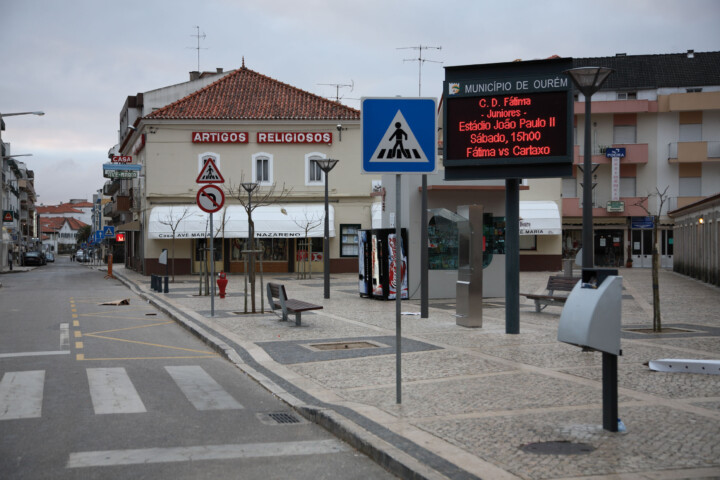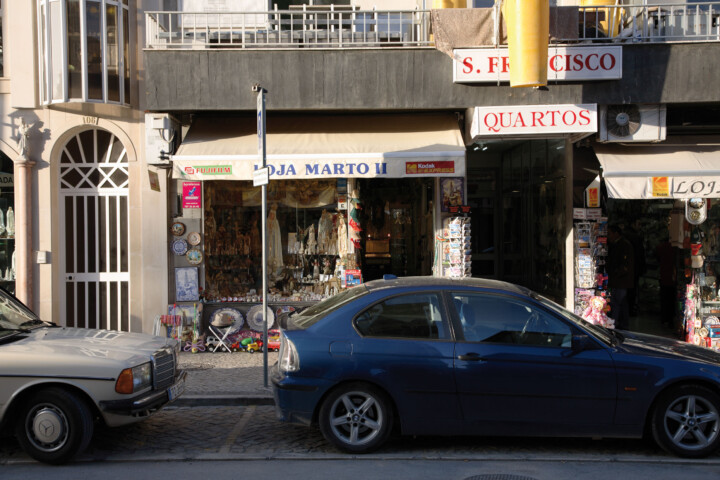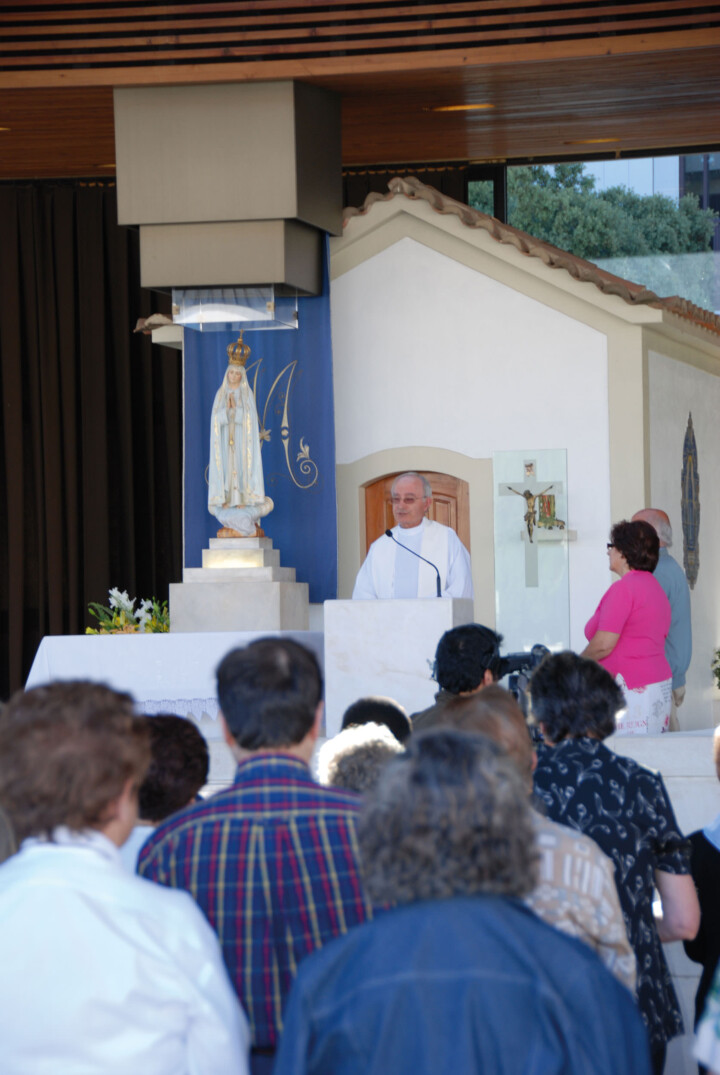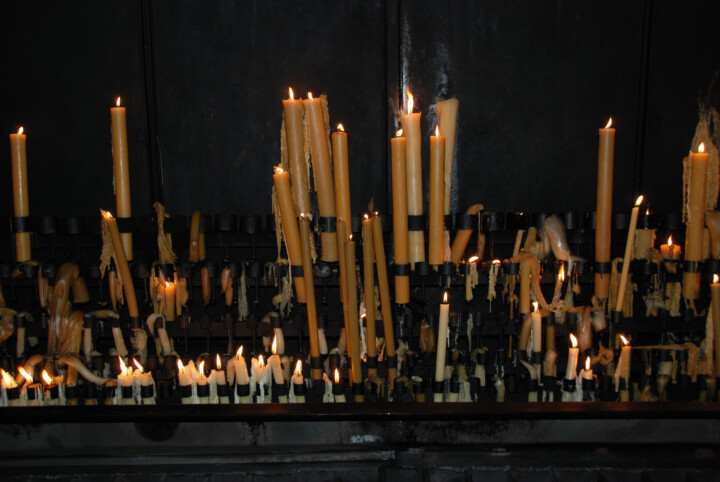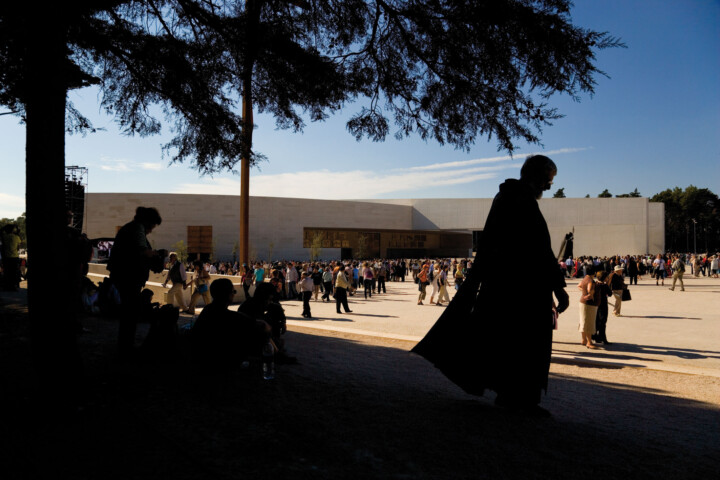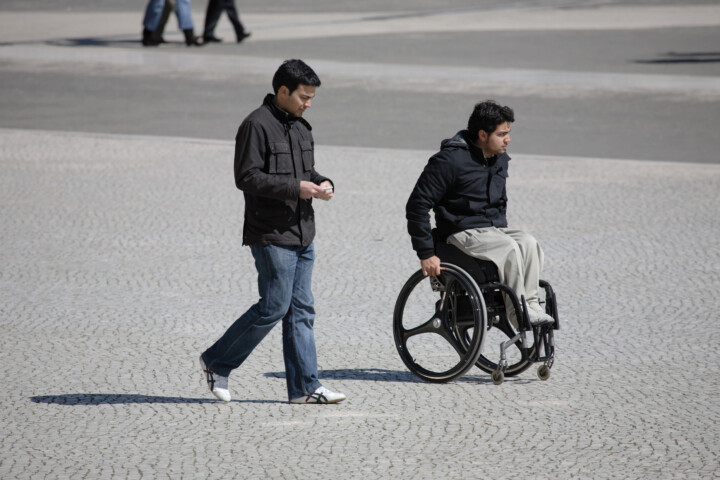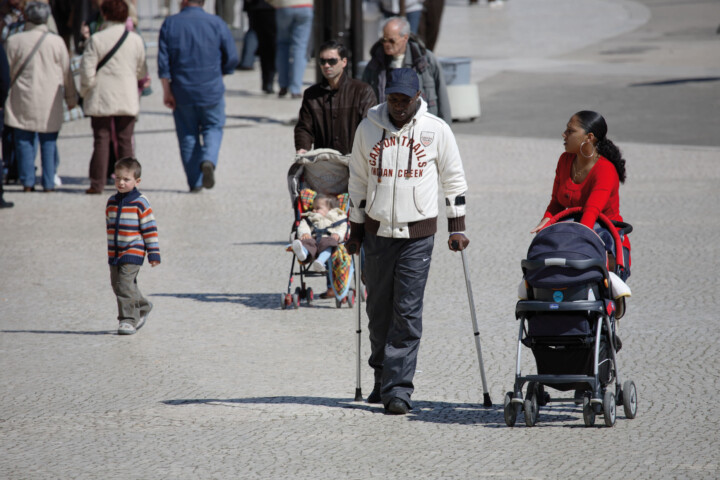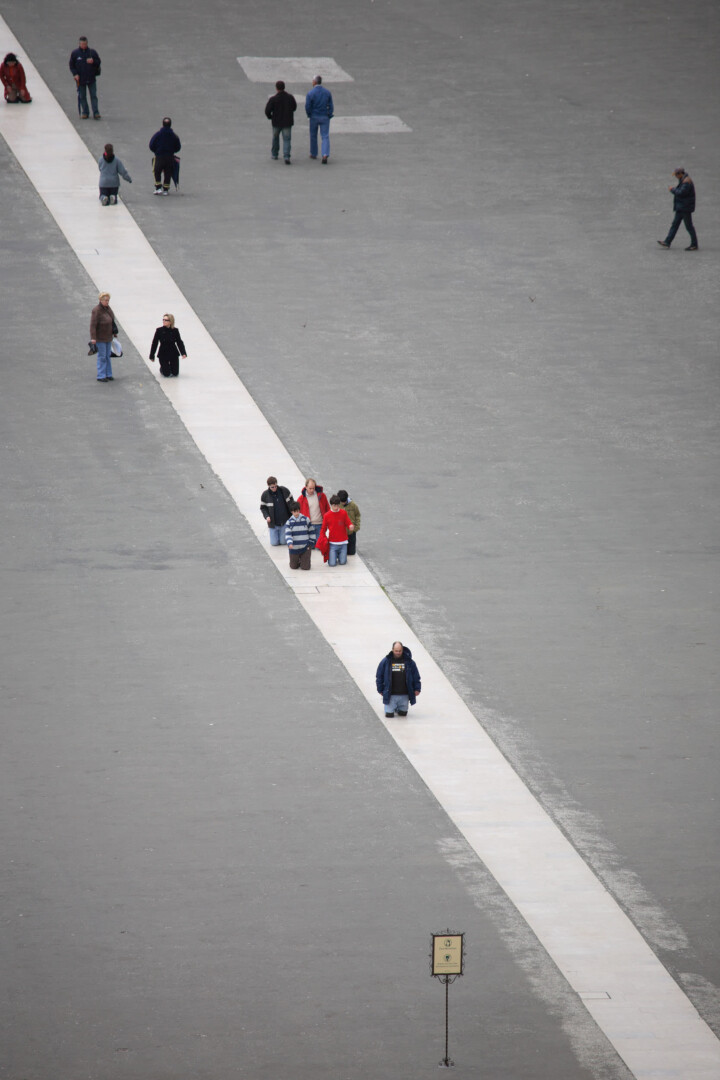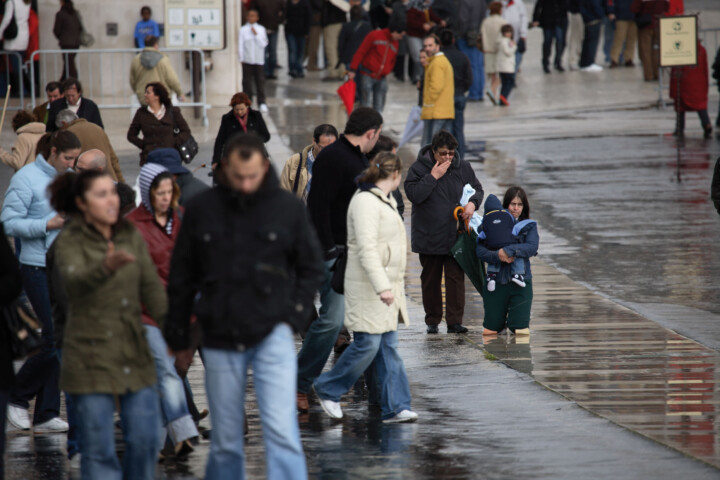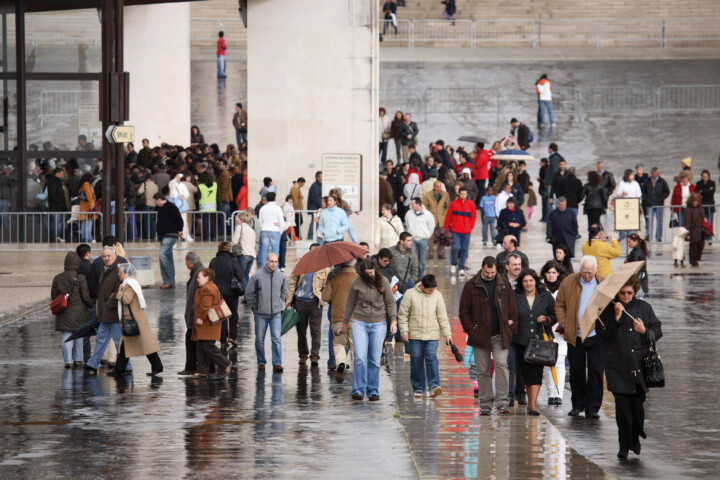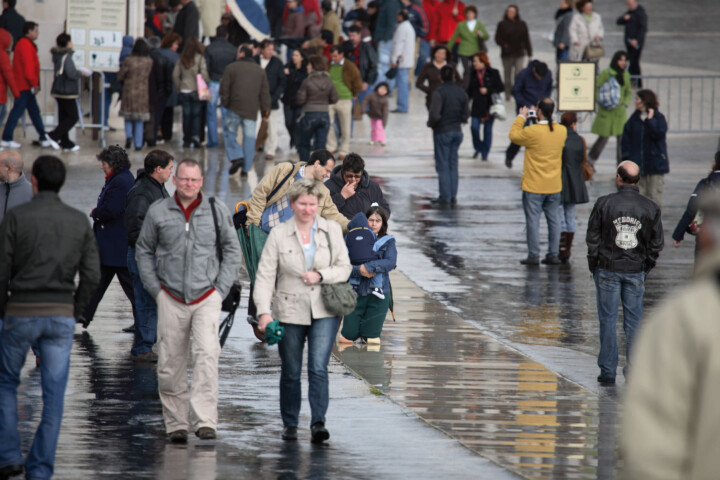Robert Schad: A Cross for Fátima
Peter Anselm Riedl
When Robert Schad told me on the phone that he had been invited to take part in the competition for a monumental cross for Fátima, I was struck by two thoughts: Was Schad’s formal language at all compatible with such a commission, if it came about? Or did not the difference between the iconographic challenge and Schad’s characteristic approach promise a result of particular power?
Schad developed his personal idiom, after an early phase in which he worked with more pliable materials such as forged steel scaffolding sewn around with textiles, in the consistent use of industrial steel of square cross-section and ever-increasing dimensions. The elements obtained from this, ideally solid, material by sawing or flame-cutting are joined together by means of welding, and it is at the points of fusion that the right angle usually loses its power and shapes emerge that are more reminiscent of organic joints than technical connections. So we are not dealing with a forging process, nor with a technique to which the criterion of constructive functionality would apply. Rather, it is a highly original mixture of technical combinatorics and modelling design. To an important extent, Schad’s world of forms results from his preoccupation with dance and music. The discovery of the square material, which is on the one hand uniform and on the other hand proves to be sculpturally formable, opened up the possibility for the artist to transpose his fantasies into an abstract, free-form spatial writing of a permanent kind, a time, according to Schad, frozen in steel. It is fascinating how metal, with which one usually associates the idea of machines, constructions or even weapons, becomes a vehicle of expression under Schad’s hands. Among the many works of the rhythmic-scriptural type, there are several that were conceived as guiding and reference objects for the expressive dance stage. However, there are also emphatically static counter-models to the seemingly dynamic sculptures, namely, works that are characterised by a taut vertical structure and that sometimes tend towards blockiness through the bundling of bar elements. On the other hand, the urge for height can also be combined with agility, as in the sculpture “ENFIM” from 2000 and its somewhat later variants: Up to a height of about 18 metres, square steel segments pile up to form a structure that repeatedly breaks out of its perpendicular in multiple bends and with its upward striving is reminiscent of a giant stalk that allows itself to be distracted neither by the imponderables of growth nor by the potential loss of stability. Translated with www.DeepL.com/Translator (free version)
Schad’s works repeatedly evoke memories of the familiar, be it vegetation, animals or architecture, but the chances of association have their limits where direct identifiability is concerned. Always, the relationship to reality remains analogical. It is better to say that it remained, for the commission to design a crucifix was at the same time an invitation to confront a figurative theme, and was also an appeal to join a powerful tradition and to continue it. However, the cross with the projecting trunk and the vertical beam, both with a rectangular cross-section, offered a possibility of linking to the artist’s own understanding of form. For the crucified, however, a mode of representation had to be found that credibly combines physical clarity with symbolic brevity in such a way that the cross and the crucifix are in material and aesthetic harmony.
In search of inspiration, Schad took a walk through art history that made him aware of the entire wealth of tradition. Beginning with early Christian depictions of the crucifixion and continuing into the early modern period, he followed a development based on the specialist literature he had collected since his years of studying art history, which provides an example of the changes in the conception of corporeality and the development of emotional reactions, In the Ottonian Gero Cross in Cologne Cathedral, the earliest large crucifix in Western art, he was captivated, for example, by the modelling, which he mastered with an astonishing sense of reality, and in the Romanesque Imervard Cross in Brunswick Cathedral by its hieratic, implacable austerity. In the Christ hanging from a forked cross of the Gothic Plague Cross in Cologne Cathedral, he recognised a paradigm for the consuming power of suffering. And the fact that the reaction to the challenges of pain remained a major theme for the following period, whether in the sense of an antique-idealising overcoming, as in the crucifix of the young Michelangelo from Santo Spirito in Florence, which Schad held in high esteem, or in the sense of an expressive exaggeration, as in the work of Matthias Grünewald or, later, El Greco, became apparent to him when he studied the almost inexhaustible art-historical fund. Schad also studied non-European Christian art, and it was above all works of African origin that, with their inwardness and simplicity, encouraged him in his efforts to formulate an interculturally linguistic sign for all Christians of this world. Translated with www.DeepL.com/Translator (free version)
Schad was by no means looking for templates that could be implemented immediately. Rather, he tried to track down motifs of form and behaviour that promised pictorial validity beyond any stylistic change, not least under the aspect of suitability for optimal long-distance effect. In the model, apart from an asymmetrical variant that met with rejection by the clients, he tested whether the conventional combination of cross and body was preferable or perhaps the presentation of the figure of Christ alone, which would then also have had to take over the formal and iconographic function of the cross. After the decision was made in favour of the first solution, the extremely difficult task of the monumental design had to be mastered. With the large cross-sections envisaged for the trunk and body of the cross, the use of solid material was out of the question, but Schad knew how to construct the square bars as hollow bodies in such a way that the impression of solidity was created, an impression that was admittedly relativised by the enormous height of the whole. The body of Christ reduced to a series of rod segments connected to each other in obtuse angulations and calculated torsions, hangs, with arms stretched wide to indicate a state between agonised passivity and, majestic revelation. And the posture of the head can be read both as a painful inclination and as a turning downward gaze at the faithful gathered below.
In Robert Schad’s Fátima Crucifix, body and cross are incomparably one and yet remain distinct. The body has become, as it were, the expressive framework, of itself, the cross is both symbol and body echo. Schad has added a truly innovative link to the rich history of the genre, which wants to be understood as a partner to Alexandros Tombazis’ monumental new church, which renounces architectural triumphalism. The common formula of “art on the building”, emphasises Robert Schad, does not do justice to the coexistence of sculpture and building, but rather the simpler formula of “art and building”.
